How You Can Train to Get Stronger and Build Muscle After 40
HERE'S HOW I became an expert on building muscle when you’re over 40: I turned 40 (and then 50, but that's a slightly different story).
I started paying more attention to the many dishonest ways fitness in general—and strength training especially—is sold to men and women over 40. It starts with the generalization that everyone over 40 is in the same condition and has the same goals.
At one extreme are bullshit claims that “age is just a number.” This crowd promotes powerlifting and CrossFit and obstacle course racing to people who put themselves at risk of serious injury if they jump into them without a solid base of muscular fitness. Those at the other extreme assume that everyone over 40 is a mess; that they’re either out of shape or broken down; that they aren’t interested in building muscle or increasing strength or just looking good in the mirror; that they’re so time-challenged that each half-hour workout must cover every aspect of fitness—strength, cardio, and flexibility.
Let’s start with a look at what’s real and what isn’t, and how you can use a program like Men's Health Muscle After 40 for your own unique body.
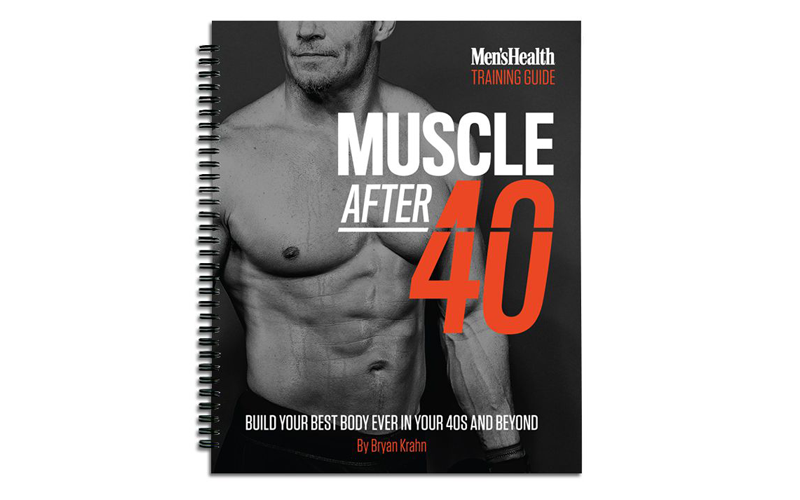
The Facts About Training After 40 for Men
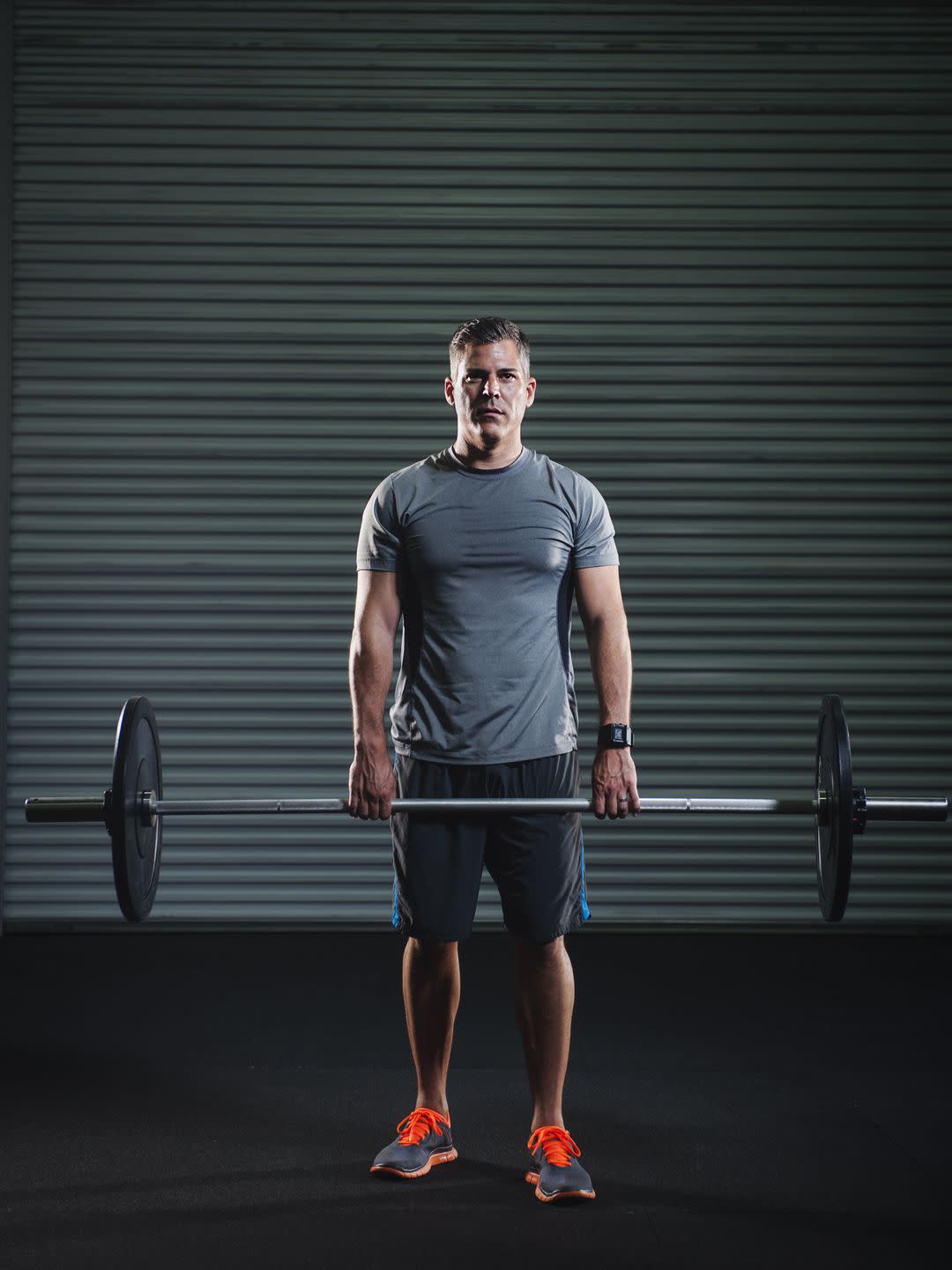
Sarcopenia Is Real—So Build Muscle Now
Sarcopenia is real. You will lose muscle as you get older. But how much you lose, and when you start losing it, are very much under your control. The best defense against sarcopenia is to build as much muscle as you can, and then work everyday to retain it. The best time to start building that muscle is “long before now." But if “before now” isn’t an option, “now” is where we’ll start.
Exercise Choice Is Critical for Older Joints
Your connective tissues have already started to lose some of their elasticity, which means your joints will be less mobile. That’s why your exercise choices are critical. The wrong ones can damage joints, which matters because...
Injuries Are Serious Business
There are no easy injuries to bounce back from or work through. The days of gritting your teeth and fighting through aches and pains are behind you.
Recovery Is Tougher—and Much More Important
Even without injuries, your work capacity is starting to decline, along with your ability to recuperate from the work you put in. Those of us in middle age simply can’t go balls-out every time we walk into the gym and expect to recover like we could 10 or 20 years ago. It makes much more sense to train more frequently, but to inflict less damage on your muscles and joints in those workouts. The workouts we do are only as good as our ability to recover from them. No recovery, no benefit.
Clock In Consistently if You Want Gains
Consistency trumps intensity. Unless you’re new to lifting, you can’t expect to see progress every single workout—to lift more weight, or lift the same weight for more reps, or grind through a higher volume of sets and reps. Think of it like your job: Much of the time, you’re just trying to get through the day without falling farther behind. Same with your workouts. As long as you show up and get some training in, that’s a win.
What Works for Men Over 40 to Build Muscle
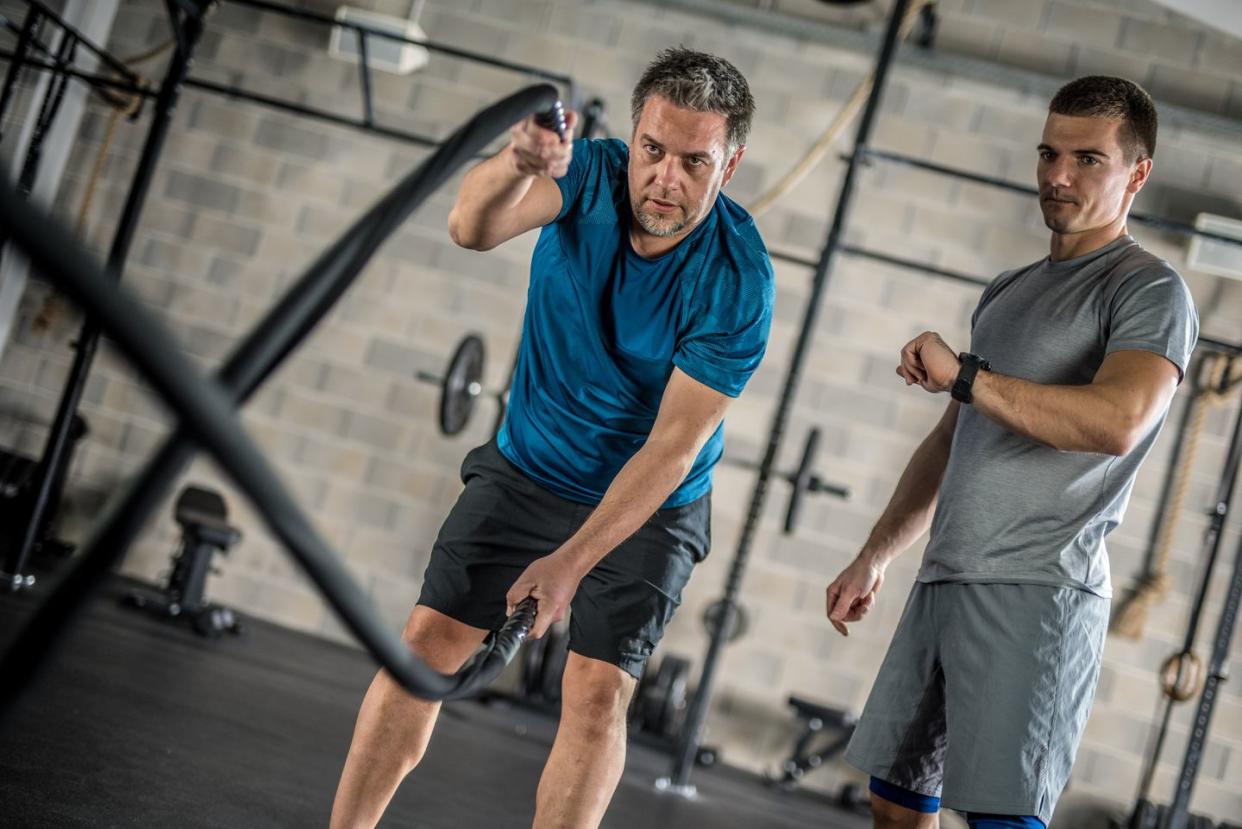
Your journey to 40 is not mine, and mine isn’t yours. But one thing I’ve learned from training clients over 40—and I’ve now trained quite a few of them—is that we can all work from the same basic set of principles. I call it intelligent bodybuilding.
I’ve been bodybuilding for the past quarter century, and I can attest that, aside from a few cartoon characters, it’s very much a thinking person’s pursuit. Bodybuilding is also the only training system you can pursue for life, with the possibility of improvements at ages when most athletes have called it quits. You won’t often find a powerlifter who started at 15 and peaked at 40 or beyond (not that you can't get strong later in life). But you’ll find plenty of bodybuilders who meet that description.
These are the fundamentals of a smart bodybuilding program:
Basic Movement Patterns
Every week you’ll do at least one exercise in these categories:
Horizontal push (pushup, bench press, fly)
Horizontal pull (row)
Vertical push (overhead press)
Vertical pull (chinup, pullup, lat pulldown)
Squat (squat, lunge, leg press)
Hinge (deadlift, back extension)
All Joint Actions
The muscles of your shoulder girdle—chest, deltoids, lats, traps—all have multiple responsibilities. Your pectoralis major, for example, does more than push something away from your chest (a movement called shoulder flexion).
It also pulls your arms in toward the midline of your body (adduction), rotates your upper arms inward (internal rotation), and even pulls them to your sides (extension). Different parts of the muscle handle different movements at different angles, which means you need more than pushups and bench presses in your workout program.
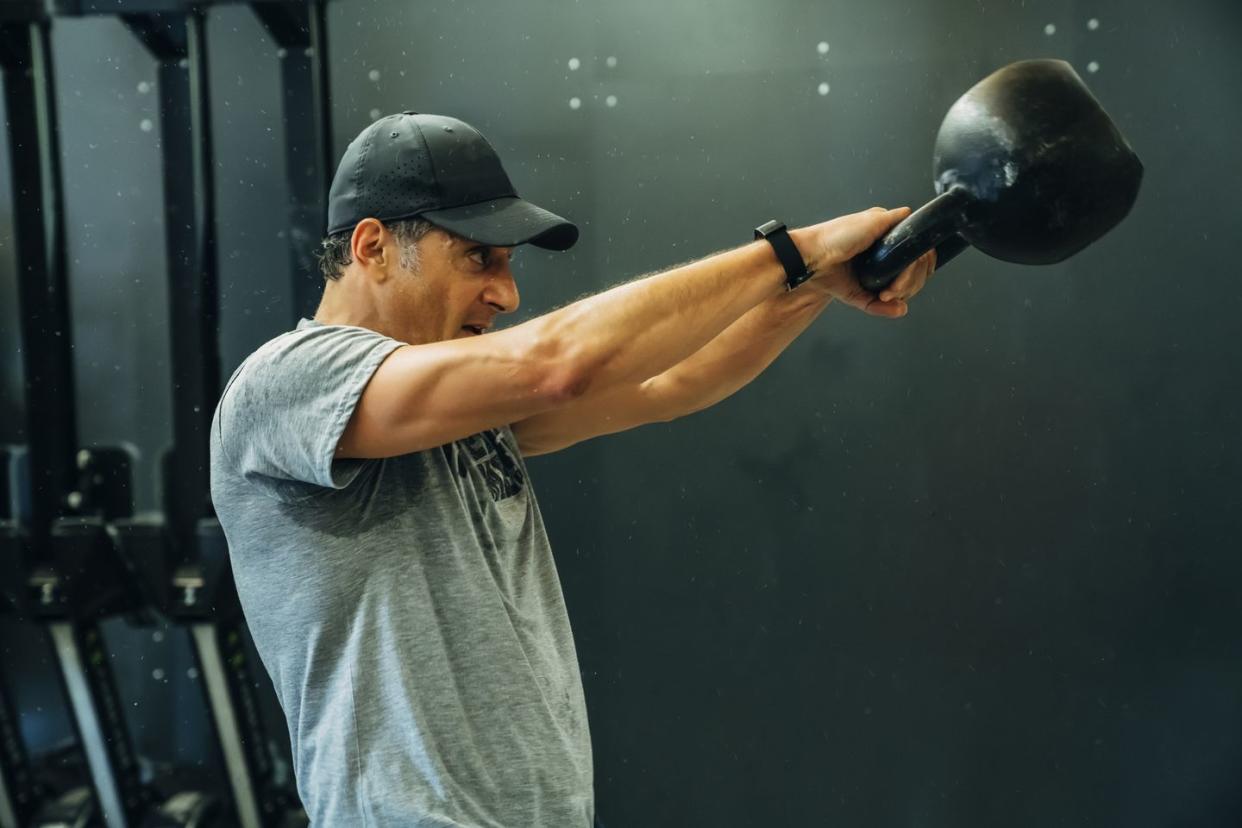
Compound and Isolation Exercises
Everyone agrees that a great workout program should be built around compound, multi-joint exercises like squats, lunges, deadlifts, presses, and rows. They use the most muscle in movement patterns that replicate real-life activities like running, jumping, lifting, climbing, pushing, and pulling. But isolation movements like curls, press downs, flies, and lateral raises are also important. There are a few reasons why I think older lifters should do more isolation work.
Unlike compound movements, they don’t consume a lot of energy, which means you can push yourself harder and recover faster. Isolation exercises are perfect for those times when you want to crush a couple of sets to failure.
They allow a deep mind-muscle connection. That is, you can go inside the muscle and feel how hard it’s working—something you can’t do with a squat or bench press. Used intelligently, they shore up vulnerable joints with minimal risk of injury.
Used intelligently, they shore up vulnerable joints with minimal risk of injury.
Moderate Loads and Moderate Rep Ranges
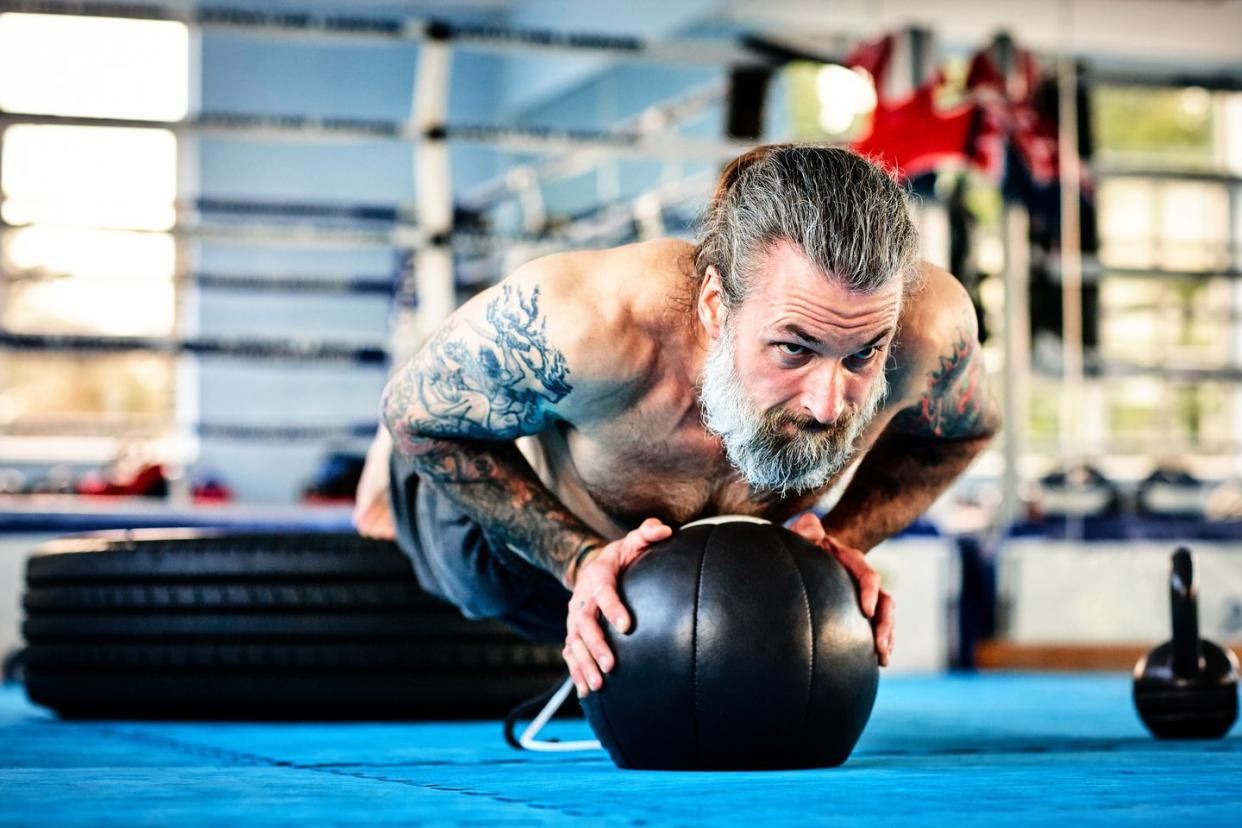
I know it’s a thrill to see your one-rep max go up on a bragging-rights exercise like the bench press or deadlift. I’ve experienced it, as every lifelong meathead has. But once you’re past 40, there’s way too much risk for basically no reward at all in terms of improving your physique.
In this program you’ll never do fewer than 6 reps per set. Most work will be in the range of 8 to 15 reps, but sometimes it’ll go as high as 25. You’ll get better muscle growth in those ranges, with less risk to your joints and easier recovery.
How will you know you’re making progress? A few ways:
More weight across all your sets within the same rep range
More reps completed in higher rep ranges
Better technique, including abetter mind-muscle connection
A better pump, or just a better overall sense of well-being when you leave the gym after a workout
A better pace, with less downtime between sets and exercises, allowing you to finish the workout faster without skipping any parts of it
Smart Exercise Choices
It’s fashionable these days to say that there are no bad exercises. But when you’re over 40, many exercises should simply be avoided:
Ballistic exercises (kipping pullups, a CrossFit staple; Olympic lifts, especially for high reps or with heavy loads; box jumps and plyometrics)
Lifts that put your shoulders in mechanically risky positions (dips; behind-the-neck presses and pulldowns; upright rows with a barbell)
Heavy barbell lifts, which are increasingly stressful to older, less responsive muscles
and joints (barbell squats, bench and shoulder presses, deadlifts)Heavy triceps extensions, because elbow injuries always take longer to heal than anyone expects
That said, I don’t want to be one of those Internet gurus who says every lifter must stop doing X, Y, and Z the minute he or she turns 40, as if every shoulder, hip, and spinal disc has the exact same expiration date.
Take the barbell shoulder press, for example. It’s not just a good lift, it’s a great lift... but only if you can do it well. Most lifters can’t, and even some who can may find that it eventually causes more residual joint pain than it’s worth.
For almost everyone reading this, it’s much better to use the dumbbell shoulder press and the other overhead lifts in their program.
Avoid These Mistakes After 40 to Keep Getting Stronger
Now that you know what works, let's talk about mistakes you need to avoid to make the most of your training at 40 and beyond.
You Stop Training for Power
Power, an important physical characteristic, has more real-world applications than you'd expect. But power diminishes quickly, especially after 40. Explosive training should be part of your workout, but not with Olympic lifts or box jumps (as we already covered as potential poor exercise choices). Instead, opt for moves like kettlebell swings.
You Lift Too Heavy
Yes, you can still touch big weights from time to time. But it's not worth making your entire routine based on lifting the heaviest load possible. As we've covered, your joints are less hardy than in years past.
You Skip Isolation Exercises
Yes, we touched on this briefly already—but it bears repeating: Don't skip your single-joint exercises. Think about choosing movements that complement the bigger multi-joint movements you do at the top of your workout.
You Don't Do Enough Cardio
You might want to be strong, but for an efficient, healthy body, you need a cardiovascular component to your training. One factor you might not have considered: Along with diminished muscle, strength, and power, your metabolism will also slow down as you age. Get your heart rate elevated to burn more calories by adding even 10 minutes of continuous cardio two to three times per week.
Want to learn more? Check out the Men's Health Muscle After 40 guide to find out. You can also join Men's Health MVP Premium for access to all of our workout plans (including another entry for guys as they age, Max Muscle at 50).
You Might Also Like
